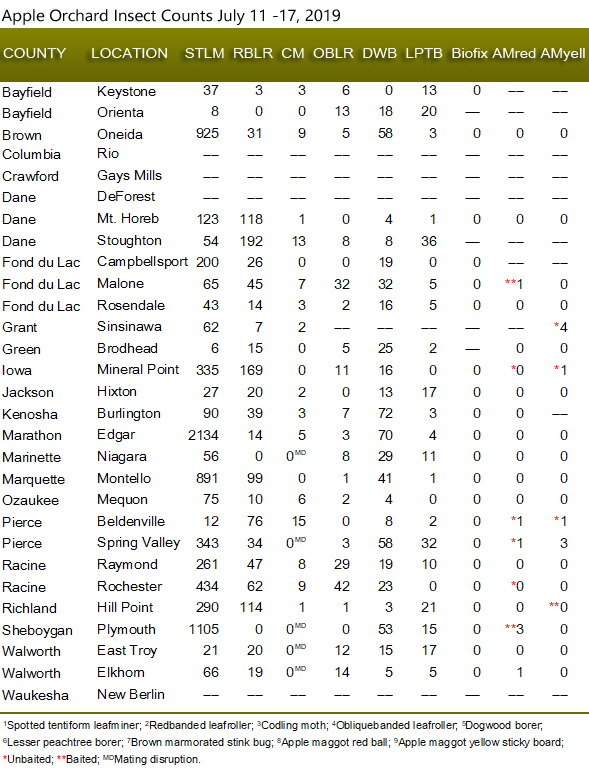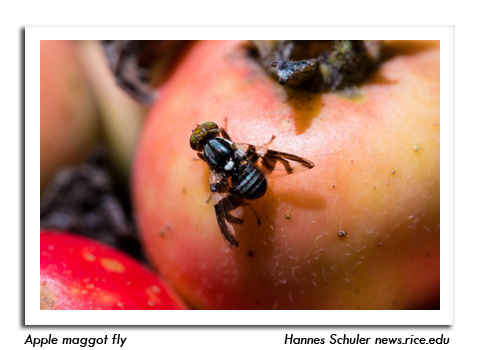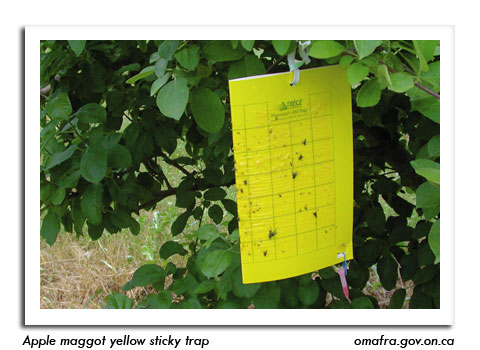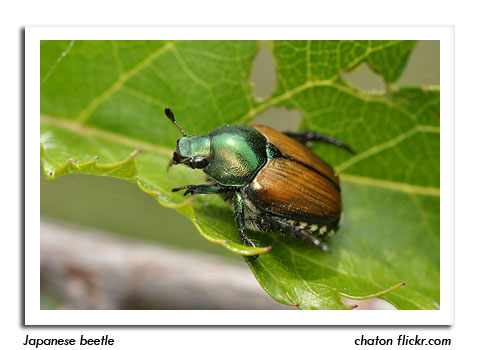
 |
|
|
Fruits
Volume 64 Number 12 Date 07/18/2019 SPOTTED WING DROSOPHILA - Berry growers in southern and western Wisconsin have reported finding initial larval infestations in their blackberries and raspberries in the past two weeks, indicating sampling for larvae in fruit should begin. To sample from a planting, place at least 15 ripe fruit in a plastic bag and lightly squeeze each fruit. Add a strong salt solution (1/4 cup salt to 1 quart water), enough to cover all of the fruit, to the bag. If present, small white SWD larvae will emerge and rise to the top of the liquid after 30 minutes. A more complete guide to the sampling process is available at http://www.canr.msu.edu/ipm/uploads/files/SWD/SWD_2013-Salt_Sugar_Boil_Test-6-20-2013.pdf. Managing SWD requires persistence and the use of as many control techniques as possible. APPLE MAGGOT - Captures on red spheres and yellow sticky traps have increased, with reports of flies appearing on traps at seven of 25 cooperating locations from Walworth to Pierce County. The highest count for the week was four flies on a yellow sticky board at Sinsinawa in Grant County. Maintaining traps will be important as emergence continues and oviposition on apples intensifies in late July and early August. CODLING MOTH - Several apple orchards are 1,000 or more degree days (modified base 50°F) beyond the first biofix, and treatments for second generation larvae are starting. Apple growers are reminded to rotate insecticides between generations to prevent resistance to chemical materials. Localized larvicide applications are usually an acceptable alternative to orchard-wide treatment for sites with variable larval pressure between cultivars or blocks. JAPANESE BEETLE - Beetles are appearing in Wisconsin apple orchards and vineyards. Damage to fruits, ornamentals and field crops is expected to intensify later this month and control may be needed to prevent fruit loss. Most chemical treatments are only effective against Japanese beetle when populations are low and the beetles are first immigrating into vineyards and orchards. Spot treating blocks or perimeter areas with the highest beetle pressure is the recommended control. SPOTTED TENTIFORM LEAFMINER - The second flight should peak soon at most monitoring sites. Several orchards reported counts above 500 moths per trap in the past week, with a high of 2,134 moths per trap registered in Marathon County. Heavy egg laying can be expected as long as pheromone traps are attracting high numbers of moths. Apple orchards with populations greater than one mine per leaf or a history of infestation should consider controlling second-generation larvae to reduce buildup of leafminers before the third flight begins in late July or August. -- Krista Hamilton, DATCP Entomologist 





|
|
|